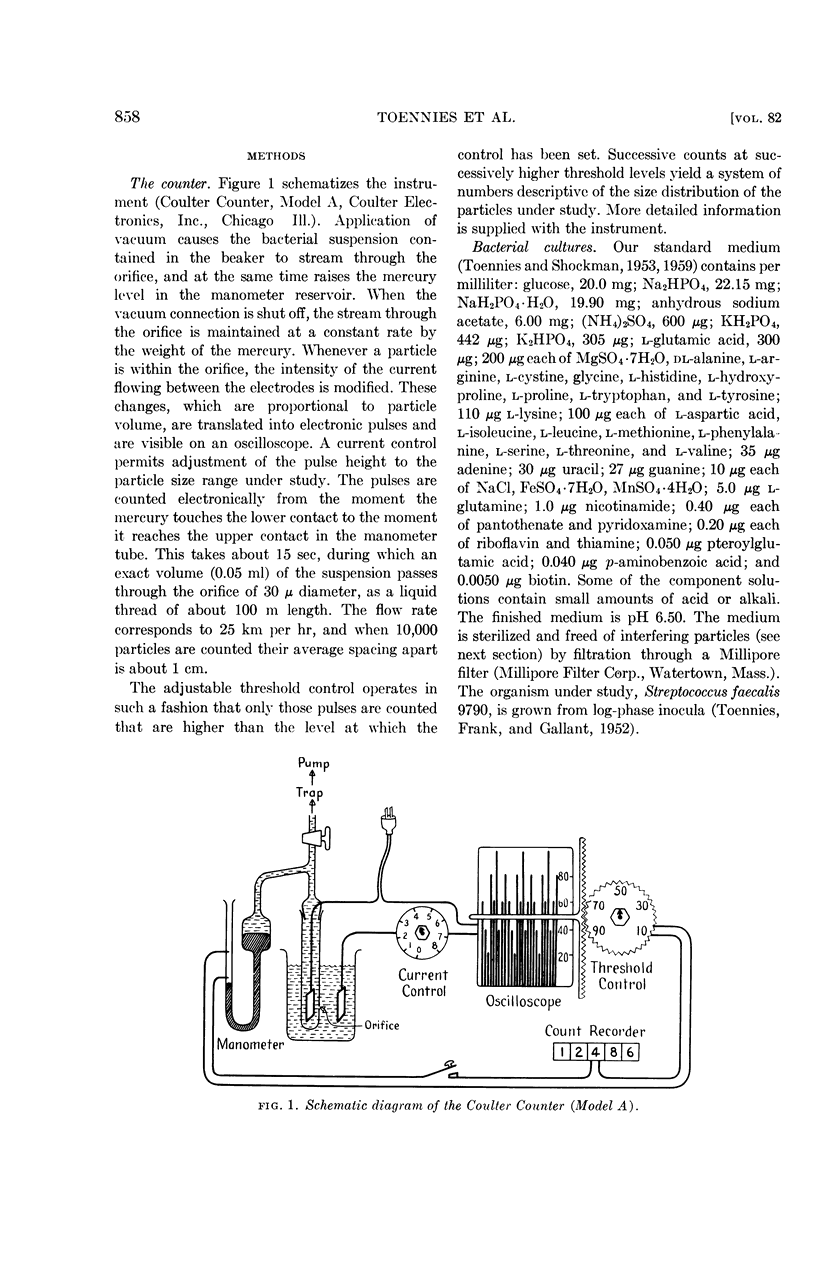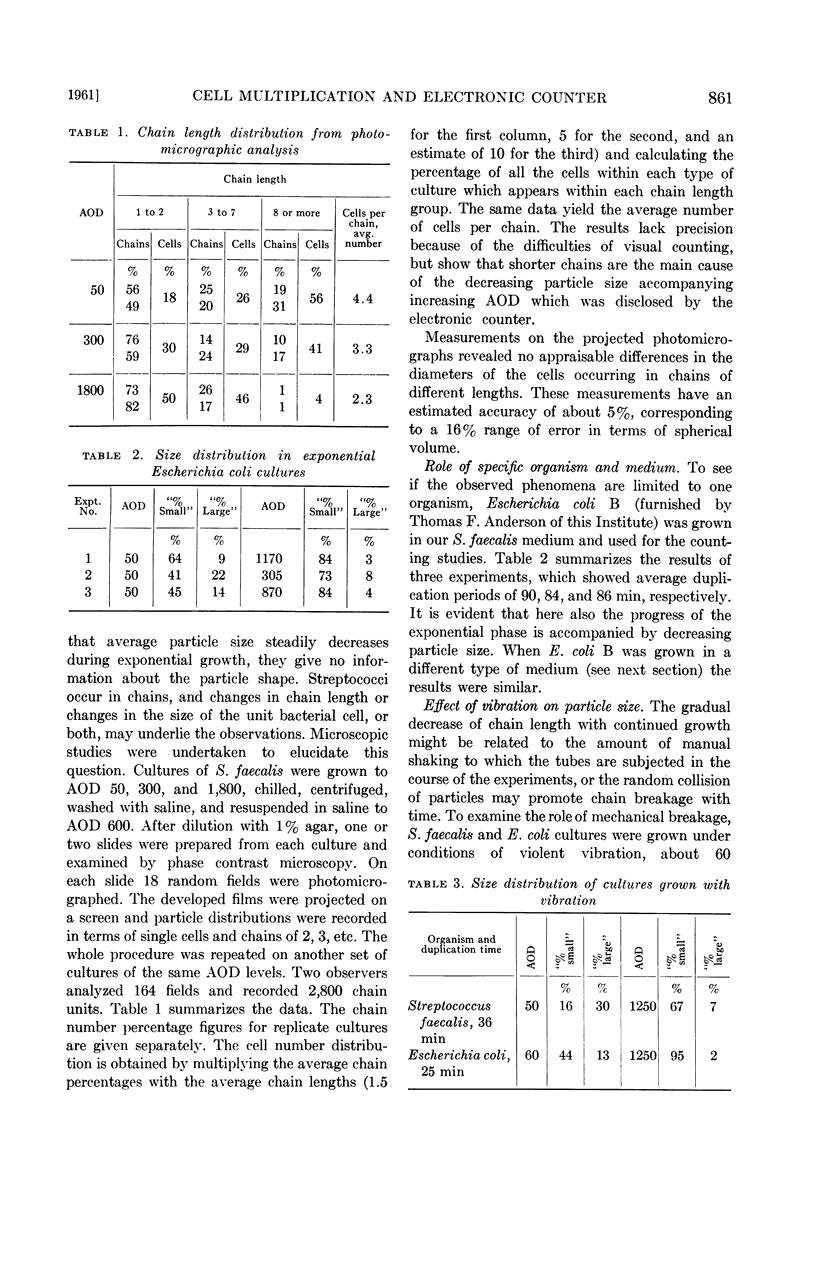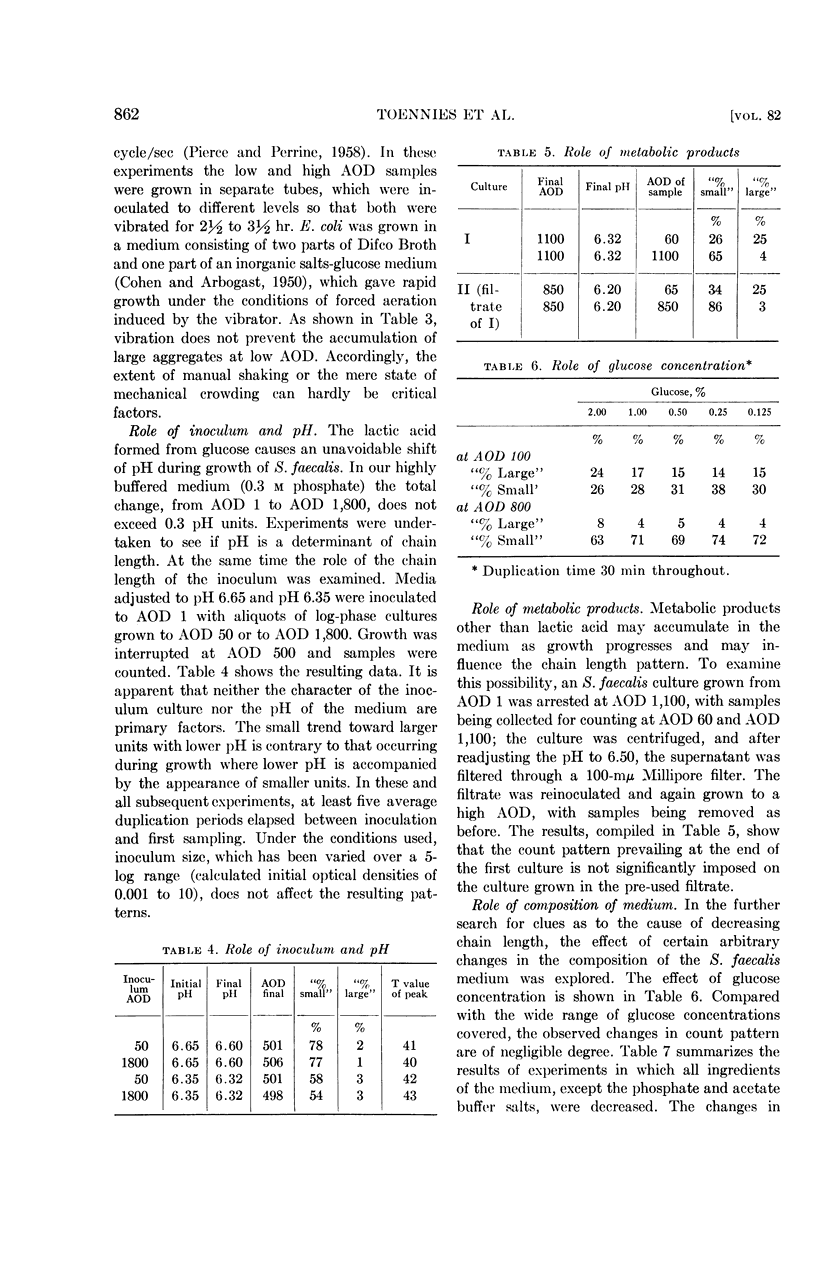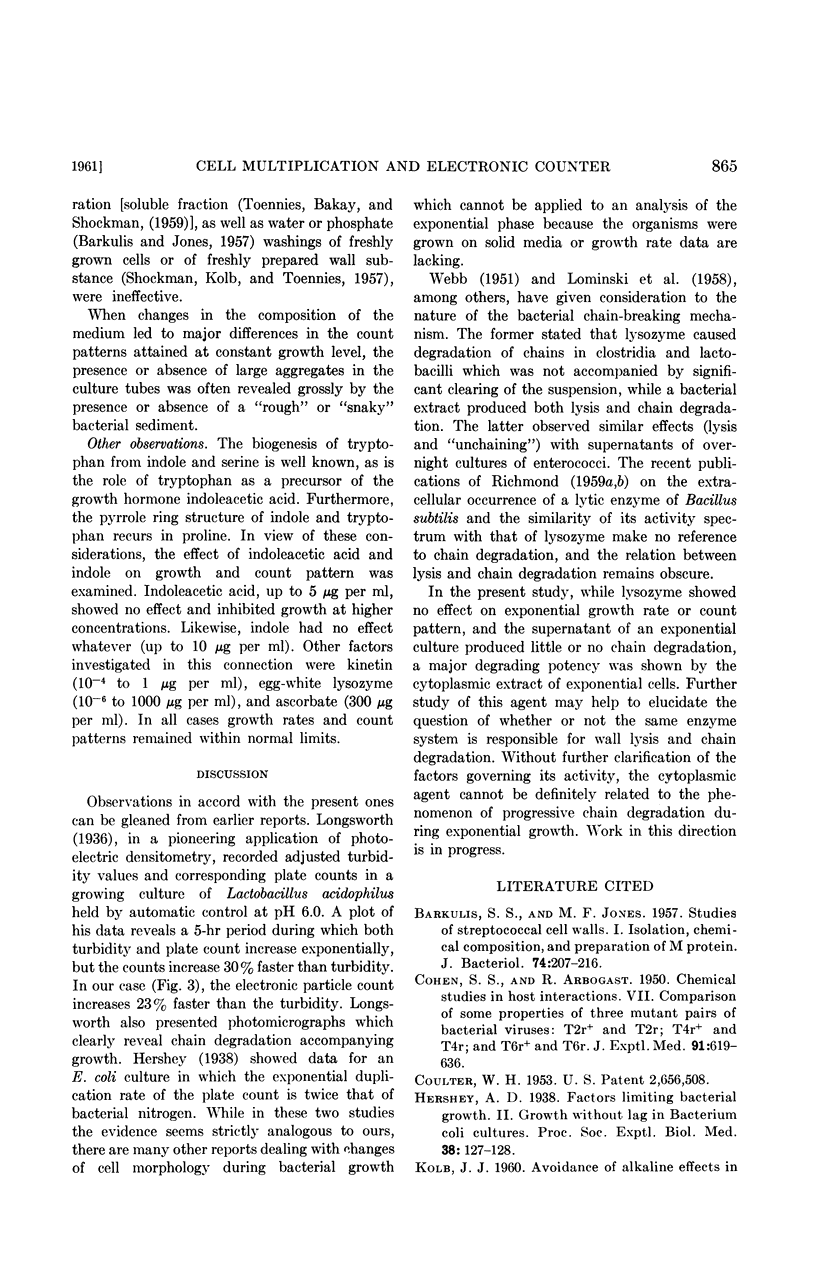Abstract
Toennies, G. (Institute for Cancer Research, Philadelphia, Pa.), L. Iszard, N. B. Rogers, and G. D. Shockman. Cell multiplication studied with an electronic particle counter. J. Bacteriol. 82:857–866. 1961.—Suitable conditions are described for the application of the Counter electronic particle counter to the study of bacterial number and particle size distribution in growing cultures. When Streptococcus faecalis and Escherichia coli were each grown in a different medium, exponential growth was accompanied by a continuous decrease in average particle size. The average apparent particle volume of S. faecalis decreased by about 50% in five generations. Microscopic studies of S. faecalis indicated that this was due to a decrease in the average chain length of the cultures. The following observations concerning average particle size during exponential growth of S. faecalis in a synthetic medium were made: (i) A decreased concentration of tryptophan, serine, or proline resulted in a significant decrease in average particle size. Similar changes in numerous other nutrients produced no or only minor changes. (ii) The addition of a cytoplasmic extract prepared from exponentially growing cells resulted in changes similar to those resulting from the partial withdrawal from the medium of certain nutrients. (iii) The effect of the cytoplasmic extract could be counteracted by the addition of tryptophan. (iv) A limited survey, including the effects of the rate of exponential growth, mechanical agitation, the presence of indoleacetic acid, indole, kinetin, lysozyme, or ascorbate, disclosed no additional factor which significantly influenced the particle size distribution.
Full text
PDF









Selected References
These references are in PubMed. This may not be the complete list of references from this article.
- BARKULIS S. S., JONES M. F. Studies of streptococcal cell walls. I. Isolation, chemical composition, and preparation of M protein. J Bacteriol. 1957 Aug;74(2):207–216. doi: 10.1128/jb.74.2.207-216.1957. [DOI] [PMC free article] [PubMed] [Google Scholar]
- COHEN S. S., ARBOGAST R. Chemical studies in host-virus interactions; a comparison of some properties of three mutant pairs of bacterial viruses, T2r and T2r, T4r and T4r, T6r and T6r. J Exp Med. 1950 Jun 1;91(6):619–636. doi: 10.1084/jem.91.6.619. [DOI] [PMC free article] [PubMed] [Google Scholar]
- KOLB J. J. Avoidance of alkaline effects in cell disruption by glass beads. Biochim Biophys Acta. 1960 Feb 26;38:373–373. doi: 10.1016/0006-3002(60)91265-8. [DOI] [PubMed] [Google Scholar]
- KUBITSCHEK H. E. Electronic counting and sizing of bacteria. Nature. 1958 Jul 26;182(4630):234–235. doi: 10.1038/182234a0. [DOI] [PubMed] [Google Scholar]
- LARK K. G., LARK C. Changes during the division cycle in bacterial cell wall synthesis, volume, and ability to concentrate free amino acids. Biochim Biophys Acta. 1960 Oct 7;43:520–530. doi: 10.1016/0006-3002(60)90474-1. [DOI] [PubMed] [Google Scholar]
- LOMINSKI I., CAMERON J., WYLLIE G. Chaining and unchaining Streptococcus faecalis; a hypothesis of the mechanism of bacterial cell separation. Nature. 1958 May 24;181(4621):1477–1477. doi: 10.1038/1811477a0. [DOI] [PubMed] [Google Scholar]
- Longsworth L. G. The Estimation of Bacterial Populations with the Aid of a Photoelectric Densitometer. J Bacteriol. 1936 Sep;32(3):307–328. doi: 10.1128/jb.32.3.307-328.1936. [DOI] [PMC free article] [PubMed] [Google Scholar]
- RICHMOND M. H. Formation of a lytic enzyme by a strain of Bacillus subtilis. Biochim Biophys Acta. 1959 May;33(1):78–92. doi: 10.1016/0006-3002(59)90500-1. [DOI] [PubMed] [Google Scholar]
- RICHMOND M. H. Properties of a lytic enzyme produced by a strain of Bacillus subtilis. Biochim Biophys Acta. 1959 May;33(1):92–101. doi: 10.1016/0006-3002(59)90501-3. [DOI] [PubMed] [Google Scholar]
- SHOCKMAN G. D. Bacterial cell wall synthesis: the effect of threonine depletion. J Biol Chem. 1959 Sep;234:2340–2342. [PubMed] [Google Scholar]
- SHOCKMAN G. D., KOLB J. J., TOENNIES G. A high speed shaker for the disruption of cells at low temperatures. Biochim Biophys Acta. 1957 Apr;24(1):203–204. doi: 10.1016/0006-3002(57)90168-3. [DOI] [PubMed] [Google Scholar]
- TOENNIES G., BAKAY B., SHOCKMAN G. D. Bacterial composition and growth phase. J Biol Chem. 1959 Dec;234:3269–3275. [PubMed] [Google Scholar]
- TOENNIES G., SHOCKMAN G. D. Quantitative amino acid assimilation in homofermentative metabolism. Arch Biochem Biophys. 1953 Aug;45(2):447–458. doi: 10.1016/s0003-9861(53)80021-4. [DOI] [PubMed] [Google Scholar]
- WEBB M. The influence of magnesium on cell division. VI. The action of certain hydrolytic enzymes on the filamentous and chain forms of gram-positive rod-shaped organisms. J Gen Microbiol. 1951 Aug;5(3):496–501. doi: 10.1099/00221287-5-3-496. [DOI] [PubMed] [Google Scholar]


